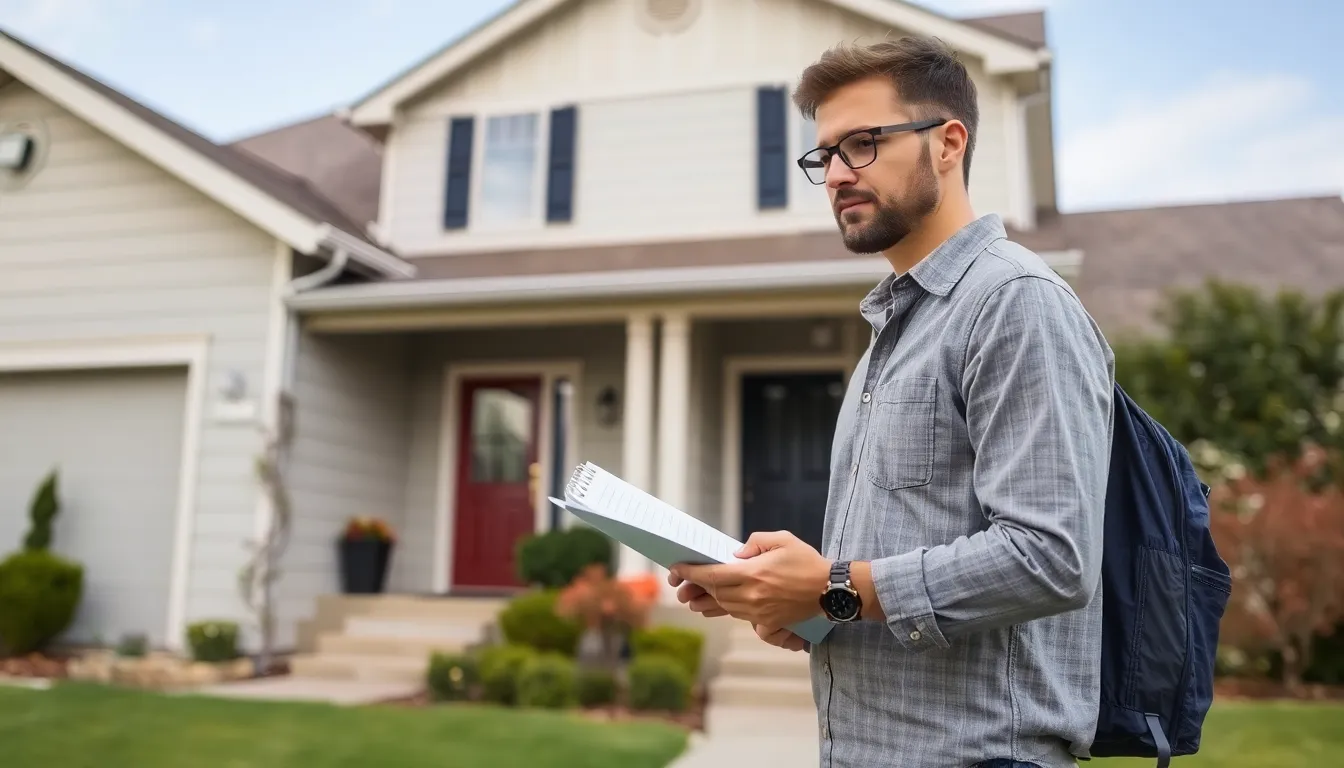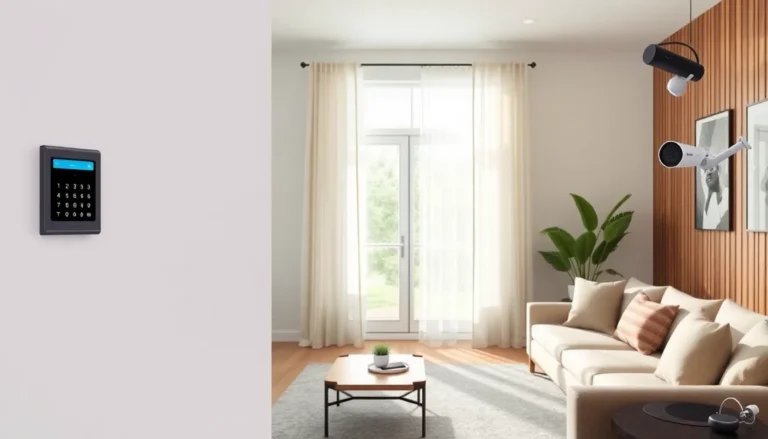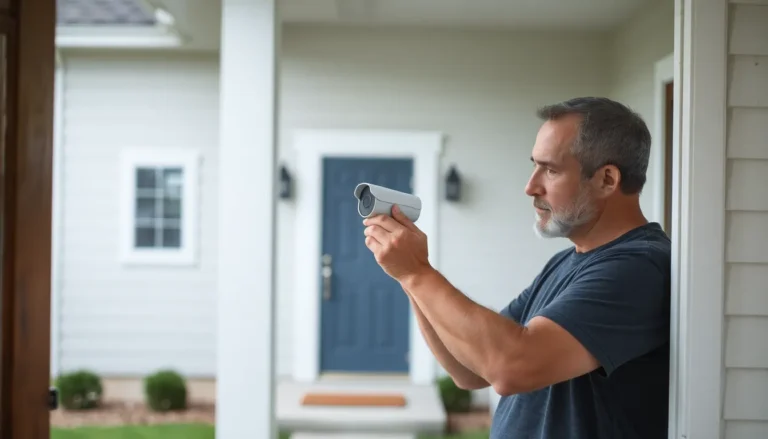In a world where your neighbor’s cat might be plotting a heist while you’re out for groceries, home security cameras aren’t just a luxury—they’re a necessity. Imagine having the peace of mind knowing that your home is under watchful eyes, even when you’re sipping a piña colada on a beach somewhere. With the right installation, you can turn your humble abode into a fortress that even the most daring burglars would think twice about.
Installing home security cameras might sound daunting, but it’s easier than teaching your dog to fetch the remote. With a little guidance, anyone can set up a system that keeps their home safe and sound. So grab your toolkit and get ready to transform your living space into a high-tech haven—because nothing says “I’m serious about security” like a well-placed camera catching every moment of your cat’s shenanigans.
Table of Contents
ToggleUnderstanding Home Security Cameras Installation
Home security cameras offer an effective solution for enhancing safety at home. Installing them requires understanding various types and their benefits.
Types of Home Security Cameras
Several types of home security cameras exist, each designed for specific needs. Indoor cameras monitor activities inside the house. Outdoor cameras endure different weather conditions and provide a wider field of view. Some cameras include features like night vision for low-light environments. Wireless cameras simplify installation and reduce the need for extensive wiring. Smart cameras integrate with home automation systems for remote monitoring via mobile devices.
Benefits of Installing Security Cameras
Installing security cameras brings numerous advantages. They act as a deterrent against potential intruders, reducing the risk of break-ins. Homeowners enjoy peace of mind knowing they can monitor their property anytime. Many cameras offer alert features, notifying users of suspicious activities. Recorded footage serves as invaluable evidence in case of incidents. Families with children and pets benefit from observing their behaviors while away. Additionally, security cameras may lead to lower homeowners’ insurance premiums by demonstrating preventive measures.
Preparing for Installation

Preparing for the installation of home security cameras involves assessing needs and selecting suitable locations. These steps ensure optimal performance and security coverage.
Assessing Your Home’s Security Needs
Homeowners should begin by evaluating their specific security concerns. Identifying areas where incidents might occur helps prioritize camera placement. High-risk zones, such as entry points and driveways, require surveillance. Assessing the layout of the property also reveals blind spots that need coverage. Consider personal factors like local crime rates and family activities, as these influence decisions. Ensuring a comprehensive understanding of security needs leads to effective camera deployment.
Choosing the Right Location for Cameras
Selecting the correct location for cameras plays a crucial role in maximizing their effectiveness. Entryways and pathways are essential spots, as they monitor potential intruder access. Outdoor areas benefit from weatherproof cameras positioned high enough to avoid tampering. Indoor cameras perform well in living areas and entry points, ensuring visibility of activity. Consider the camera’s field of view; wide-angle cameras capture larger areas. For optimal performance, avoid obstructions that might block the lens. Setting cameras at strategic angles enhances overall coverage and security.
Installation Process
Installing home security cameras requires careful planning and the right tools. Understanding the installation process simplifies achieving effective surveillance coverage.
Tools Required for Installation
Gather essential tools for a successful installation. A drill helps affix cameras securely to walls. Screwdrivers are necessary for fastening screws. Use a ladder to reach elevated spots, ensuring cameras capture wide angles. A level guarantees proper positioning, preventing tilted footage. Lastly, having a measuring tape assists in accurately determining placement distances while maintaining straight alignments.
Step-by-Step Installation Guide
Follow these steps for an effective installation. Begin by selecting camera locations based on security priorities. Mark areas where cameras will monitor entry points and blind spots effectively. Next, drill holes and secure the cameras using designated screws. Connect cameras to the power source if needed, ensuring proper cable management. Configure the camera settings through the app or software for optimal performance after all units are installed. Conduct a final check of angles and functionality for comprehensive coverage and reliability.
Post-Installation Considerations
After installing security cameras, homeowners must consider important post-installation steps for effective monitoring. Ensuring cameras function properly is essential for optimal security.
Testing Your Security Cameras
Testing security cameras confirms effective operation and coverage. First, check that each camera is powered on and connected to the network. Next, review the camera angles to ensure they capture the intended areas. It’s beneficial to walk around monitored spaces while observing the live feed. Adjusting the camera positions can enhance visibility and eliminate blind spots. Regular checks help identify any issues, such as connectivity problems or recording malfunctions. Performing this test shortly after installation provides peace of mind, knowing they’re fully functional.
Setting Up Notifications and Alerts
Setting up notifications ensures homeowners receive timely information about security events. Many camera systems offer app integration to deliver alerts directly to smartphones. Customizing settings allows users to choose the types of alerts desired, such as motion detection or sound alerts. Fine-tuning the motion sensitivity prevents unnecessary notifications caused by passing cars or trees. Timely alerts allow homeowners to respond quickly to potential threats. Reviewing footage captured during alert triggers can provide context and aid in assessing situations. These notifications enhance overall security awareness and facilitate better decision-making.
Installing home security cameras is a proactive step towards creating a safer living environment. By taking the time to assess security needs and strategically placing cameras, homeowners can significantly enhance their protection. The right setup not only deters potential intruders but also offers peace of mind when monitoring loved ones and property.
With user-friendly installation processes and various camera options available, there’s no reason to delay. Once installed, testing and configuring the cameras ensures they function optimally. By embracing this technology, homeowners can enjoy a greater sense of security and confidence in their home.



